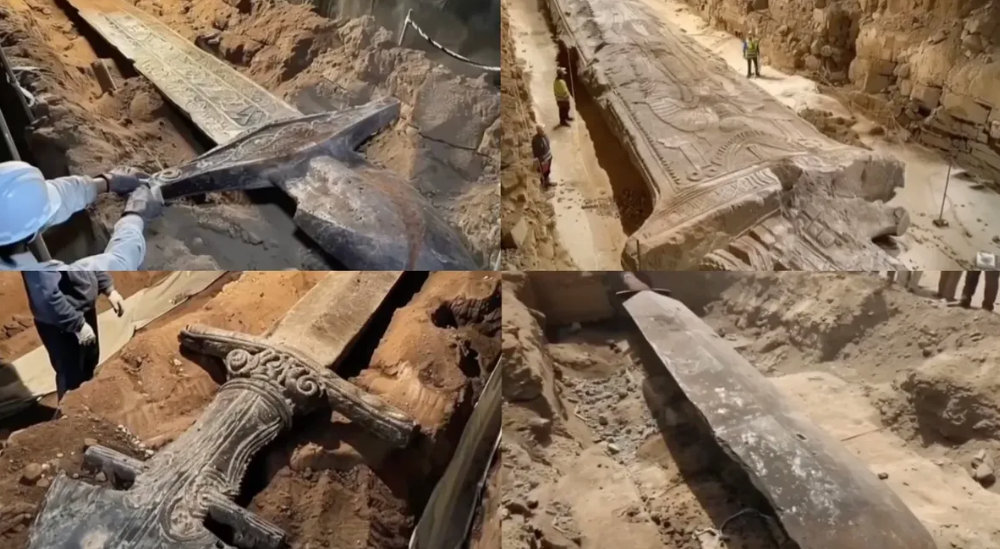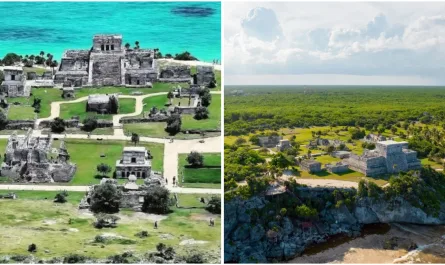Hold onto your hats, history lovers, because a jaw-dropping discovery in Türkiye is turning everything we thought we knew about ancient civilizations upside down! Archaeologists have unearthed a collection of massive, intricately designed swords, dating back roughly 3,000 years, at the Arslantepe mound, a UNESCO World Heritage Site in Türkiye’s Malatya province. These aren’t just any swords—they’re being called some of the oldest and most impressive ever found, sparking wild theories about giant warriors, advanced metallurgy, and a mysterious Bronze Age society. But is this find really rewriting history, or is it being blown out of proportion? Let’s dive into the details and uncover the truth behind this “giant” discovery.

The Discovery: Ancient Swords at Arslantepe
In the 1980s, excavations at Arslantepe, an ancient mound dating back to the Early Bronze Age, revealed a cache of nine swords and daggers, ranging from 17.7 to 23.6 inches (45 to 60 cm) in length. Fast forward to 2023, when researchers, including archaeologists from Ca’ Foscari University of Venice, confirmed these weapons, made of arsenical bronze (a copper-arsenic alloy), are among the oldest swords ever discovered, dating to around 3300–3000 BCE. Found in a mud-brick palace complex, these blades were decorated with silver inlays, suggesting they belonged to high-status individuals, possibly local chiefs buried with symbols of power.
The swords’ craftsmanship is stunning. Their intricate silver engravings and the use of arsenical bronze—a precursor to tin-based bronze—hint at a society with advanced metallurgical skills. The palace at Arslantepe, spanning 43,056 square feet, included a central courtyard, monumental structures, and evidence of large-scale grain storage and long-distance trade, pointing to a complex, organized civilization. But here’s where things get tricky: social media claims, like those flagged by Snopes, have hyped these finds as “giant swords” wielded by “giant warriors,” with some posts racking up over 1.4 million views. The catch? Many viral images tied to these claims are AI-generated fakes, showing deformed hands, inconsistent shadows, and unnatural features.
Rewriting History or Just Hype?
So, do these swords really “revolutionize” our understanding of ancient civilizations? Let’s break it down. The Arslantepe swords are significant because they push back the timeline of sword-making, showing that Early Bronze Age societies in Anatolia were more advanced than previously thought. Chemical analyses, conducted with the University of Padua, confirmed the swords’ age and alloy, matching similar finds at the Tokat Museum in Türkiye’s Sivas region. This suggests a regional tradition of sophisticated metalwork, possibly tied to elite warriors or ceremonial roles. Archaeologist Elena Rova noted that these weapons were buried with chiefs to emphasize their status, not necessarily because they were used in combat.

But the “giant” label seems to be a stretch. At 17.7 to 23.6 inches, these swords are impressive but not unusually large compared to later Bronze Age weapons. Claims of “giant warriors” likely stem from misinterpretations or outright fabrications, like the AI-generated images circulating online. There’s no evidence of oversized humans wielding these blades—skeletal remains from Arslantepe’s Chalcolithic cemetery (around 4000 BCE) show typical human sizes. The idea of a “mysterious civilization” also overplays the find; Arslantepe is a well-studied site, linked to early urban societies in Anatolia, not an unknown culture.
Connecting to Abu Gurab’s Mysteries
Since you mentioned the Solar Temple of Abu Gurab and its “stargate” theories, it’s worth noting how these discoveries fuel similar speculative narratives. Just as Abu Gurab’s alabaster structures sparked talk of cosmic portals, the Arslantepe swords have been spun into tales of giant warriors or lost technologies. Both cases show how real archaeological finds—impressive in their own right—get amplified into sensational stories. At Abu Gurab, the 2022 discovery of a mud-brick temple beneath Nyuserre’s solar temple revealed Fifth Dynasty ritual practices, not stargates. Similarly, Arslantepe’s swords reveal a sophisticated Bronze Age society, not mythical giants.
The Real Revolution
The true significance of the Arslantepe swords lies in their age and craftsmanship. Dating to 3300–3000 BCE, they predate many known weapons, showing that Anatolian societies mastered complex metallurgy earlier than expected. The silver inlays and palace context suggest a hierarchical society with elite warriors or rulers, challenging older views of the Early Bronze Age as less developed. Plus, the site’s evidence of trade and agriculture paints a picture of a thriving, interconnected culture.

But let’s be skeptical of the hype. The “giant sword” narrative, like the “underground city” claims beneath Giza’s pyramids, thrives on exaggeration. No engravings of advanced construction techniques (as claimed in your Giza post) or oversized warriors appear in the Arslantepe record. The viral buzz, especially AI-generated images, is more about clicks than facts. For a grounded take, stick to sources like Ancient Origins or the Smithsonian Magazine, which focus on the swords’ archaeological context.
What’s Next?
The Arslantepe find is a game-changer for understanding Bronze Age metallurgy and society, but it doesn’t need sci-fi embellishments to be amazing. Ongoing research at the site, including trace element analysis, could pinpoint the swords’ metal sources, revealing more about ancient trade networks. For now, these blades remind us that ancient peoples were capable of incredible feats—without giants or aliens.
Want to explore more? Check out Ancient Origins for details on Arslantepe or Live Science for other ancient weapon finds. What do you think—elite warriors or ceremonial treasures? Let’s keep digging into the past!
Sources: Ancient Origins, Snopes, CNN, Daily Mail


